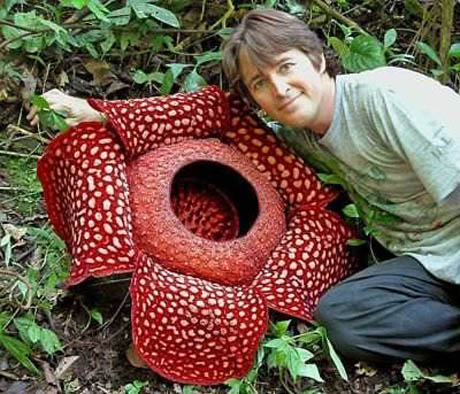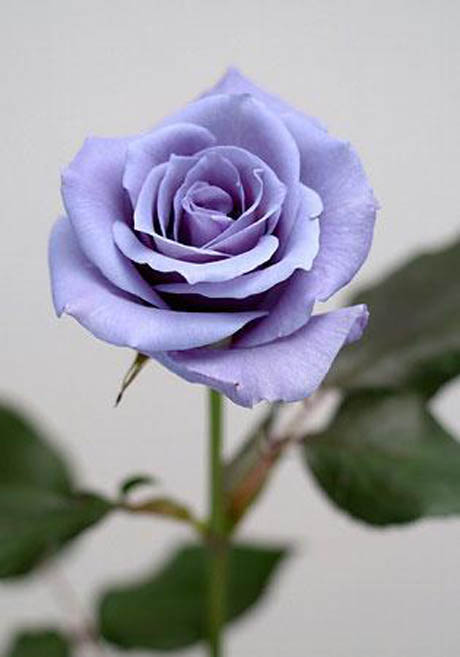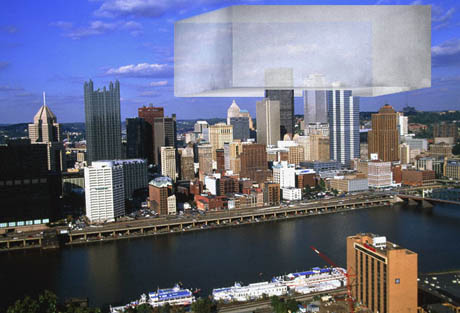IMAGE: The completely unrelated, somewhat awe-inspiring USB Scent Flower™ Pat. Pend, only $9.99 plus postage and shipping.
According to Dr. Abdul Latiff Mohamad, professor in the School of Environmental and Natural Resource Sciences at the National University of Malaysia, the combination of rising temperatures and increased air pollution in Kuala Lumpur is weakening the scent of flowers.
Mohamad told the Asia One news site that “the aroma-producing chemical compounds in flowers dry up faster now compared with before.” Fragile petals and pistils wither in the heat, he explained, while greenhouse gas emissions cause plants to produce fewer fragrance molecules in the first place.
The result is a “missing scent-trail,” which he fears may be “lost forever.”
IMAGE: Coincidentally, Dr. Abdul Latiff Mohamad is also a world expert on the endangered and enormous Rafflesia, which is known as the corpse flower, “for its stomach-churning scent.” Photo, which does not show Dr. Abdul Latiff Mohamad, via.
Meanwhile, as if to accelerate the disappearance of Kuala Lumpur’s floral scentscape, Mayor Datuk Ahmad Fuad Ismail has begun to replace the flowers in the city’s planting program with more durable “tropical shrubs” and “shady trees.” Climate change-induced wilting and death had bloated the city’s flower budget to an unsustainable 1.5 million Malaysian Ringgit ($635,100) per month by 2009. Mayor Ismail framed the dilemma in stark terms:
It was getting too costly to beautify the city. Flowers were dying fast.
The city of Kuala Lumpur, we must conclude, smells quite different today than it did just a few years ago; its new olfactory signature is the scent of climate change.
IMAGE: A blue rose, created by Japan’s Suntory Ltd. (a major whisky distiller) by “implanting the gene that leads to the synthesis of the blue pigment Delphinidin in pansies.” Scientists have been working on genetically engineering flowers to produce more fragrance for some years: in 2008, Israeli researchers claimed to have discovered how to enhance a flower’s scent by ten times, a method they report could also produce “‘extra-tasty’ fruits and vegetables, since smell is a key factor in determining taste.”
Dr. Abdul Latiff Mohamad’s recommendation is to genetically engineer flowers so that they continue emitting the same amount of fragrance as before:
The only way out, he said, was to genetically modify the flowers so that the effects would not be permanent and the future generation would not be robbed of nature’s beauty.
This comment is interesting as much for the suggestion that preserving the smell of a city is part of each generation’s duty to the next as for the vision of future flowers re-engineered to become on-demand scent factories.
After all, the smell of cities has changed – often radically – due to human activity before. The development of sewage infrastructure, for example, combined with the invention of the internal combustion engine, must mean that twenty-first century Paris bears almost no olfactory resemblance to its nineteenth-century counterpart. The smoky, sulphurous smell of Dickensian London is gone, lost to our senses for good with the onset of clean-air legislation. Online forums host nostalgic laments for the more recently lost whiff of high-octane leaded petrol, as well as complaints about its replacement with the rotten-egg smell of catalytic converters.
I’m reminded here of David Gissen’s ongoing research into atmospheric preservation and reconstruction, such as his proposal for an indoor air archive, which he describes as:
A fantasy archive for the retrieval of future data related to the indoor atmosphere of cities … [built] using the tools we currently have to study the air of the past, but wiring them in reverse.
IMAGE: Reconstruction – Smoke, 2006, by David Gissen. Excitingly, Gissen will be continuing his creative exploration of the design potential of atmospheric reconstruction as part of a forthcoming exhibition (autumn 2011) at the Nevada Museum of Art, alongside fantastic British architects Smout Allen, and curated by Geoff Manaugh of BLDGBLOG.
In the illustration above, Gissen proposes a contained reconstruction of the early twentieth-century atmosphere of Pittsburgh, on the compelling grounds that, “it is difficult to understand much of the architectural work of Pittsburgh from 1900-1950 without an understanding of the former state of the city’s atmosphere.”
Following that line of logic, and given the importance of smell in shaping cuisine and even culture, you could potentially argue that it is all but impossible to understand the recipes of cities past without access to their former smellscapes. Given today’s research into molecular archaeology and the biochemistry of sensory perception, perhaps it is already – or will be soon – possible to attempt a Gissen-like reconstruction of the lost smells of history. In which case, for example, the Guardian‘s Allegra McEvedy would round out her entertaining attempt to follow seventeenth-century instructions for how “To Boyl a Capon with Ranioles” with a molecular recipe to recreate the accompanying olfactics of Restoration London.
Meanwhile, perhaps it is indeed our responsibility, as Dr. Mohamad’s comment suggests, to archive the manufactured environmental scents and weakened natural fragrances of today’s industrialised world, so as to provide future context for our lifestyles and eating preferences. If so, what would such an archive look like?
[Earlier on Edible Geography: “The Taste of Climate Change“]




